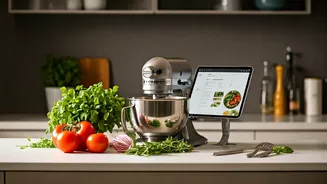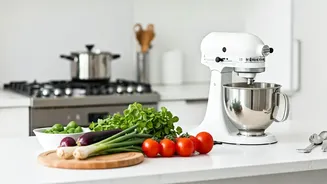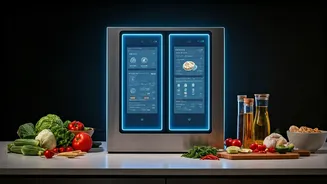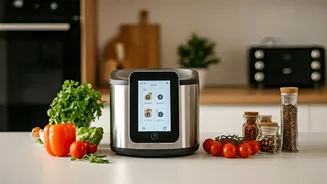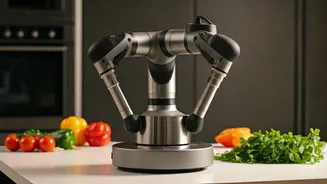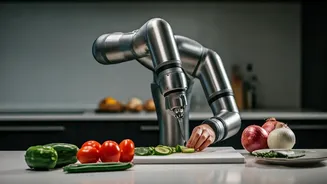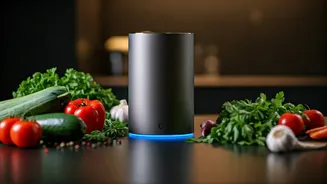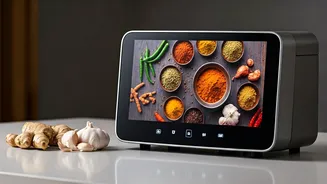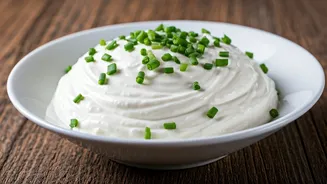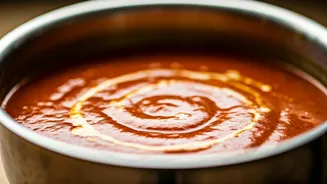The Cooking Companion
Having a kitchen assistant means simplifying the preparation of any recipe. It offers step-by-step guidance, ensuring accuracy and consistency in every
dish. This technology can provide precise measurements, substitution options, and even cooking time adjustments. This helpfulness is especially beneficial for beginner cooks, aiding them in mastering fundamental skills and building confidence in the kitchen. For seasoned cooks, a kitchen assistant can help to streamline complex recipes. By integrating features such as timers, temperature guides, and ingredient lists, the kitchen assistant helps eliminate guesswork, reduces errors, and saves time. The end result is a more relaxed and enjoyable cooking experience, encouraging individuals to try new recipes and explore diverse cuisines. So whether someone is a novice or a culinary expert, this assistant offers a reliable solution for preparing any recipe flawlessly.
Mastering Techniques
The kitchen assistant doesn't just provide recipes; it teaches proper cooking techniques. Through interactive tutorials and visual aids, it breaks down complex processes into simple, manageable steps. This educational approach helps cooks learn and understand the 'why' behind each technique, from knife skills to sauce-making. It offers interactive guides on crucial techniques such as searing, braising, and baking. The assistant's ability to offer detailed explanations and demonstrations makes it a great resource for improving cooking abilities. By focusing on both theory and practice, the assistant helps cooks build a strong foundation of culinary knowledge. As a result, users gain a deeper understanding of food preparation. This leads to better outcomes and a more passionate approach to the culinary arts. With the right tools and guidance, mastering culinary skills becomes easier, enabling cooks to explore complex recipes and achieve extraordinary results.
Smart Ingredient Management
One of the greatest benefits of the kitchen assistant is smart ingredient management. It tracks what you have on hand, suggests recipes based on those ingredients, and creates shopping lists as needed. This feature is particularly useful for avoiding food waste and reducing grocery bills. Beyond this, it can also suggest substitutions for ingredients, offering alternatives if something is missing. If you're running low on an ingredient, it can immediately suggest a replacement that works well in the recipe. This kind of flexibility saves time and avoids interruptions during cooking. Furthermore, some assistants also keep track of expiration dates. This will further reduce waste and remind users to use ingredients before they go bad. By integrating these smart management tools, the kitchen assistant simplifies the meal planning process and makes cooking more sustainable and cost-effective.
Customization & Adaptability
A truly advanced kitchen assistant provides customization options, adapting to individual preferences and dietary needs. Whether someone is vegetarian, vegan, or has allergies, the assistant can filter recipes to fit their specific requirements. Moreover, it allows users to adjust portion sizes, modify cooking times, and experiment with different flavors to personalize recipes. This adaptability makes cooking fun, allowing individuals to explore new cuisines and experiment with different ingredient combinations. It can also create meal plans, manage shopping lists, and track nutritional information, helping users meet their health and wellness goals. This level of customization ensures that the assistant meets the user's specific demands, offering a tailored cooking experience. It transforms the kitchen into a personalized culinary space where cooks can explore and create meals that are both delicious and aligned with their unique preferences and needs.
Overcoming Common Challenges
Cooking can be tricky; that is why a kitchen assistant is so helpful. It addresses many common problems. For instance, the assistant can help in identifying and fixing mistakes. If a dish doesn't turn out as expected, the assistant provides suggestions for modifications and improvements. It can also help cooks avoid common pitfalls. This includes preventing overcooking or undercooking ingredients, ensuring the right balance of flavors, and suggesting proper storage techniques to maintain freshness. Moreover, the assistant provides guidance on handling various cooking equipment and techniques. This could include using a pressure cooker safely or mastering the art of sous vide. By focusing on these challenges, the kitchen assistant empowers cooks of all levels to create successful meals. The overall goal is to turn cooking struggles into triumphs, resulting in a more enjoyable and successful culinary experience.
